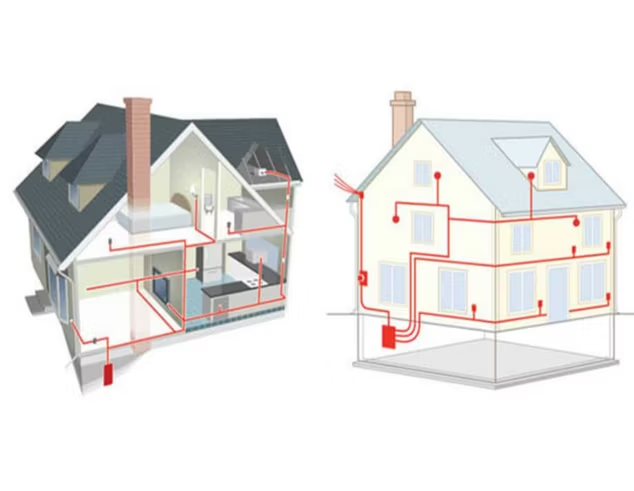As an electrician based in Port Macquarie, I often encounter homeowners unsure about when their property requires a full rewire. Electrical systems are the unseen backbone of our homes, and outdated or faulty wiring can pose serious safety risks. In this guide, I’ll walk you through the signs that indicate your house may need rewiring and provide an overview of the associated costs.
⚡ When Does a House Need Rewiring?
While the age of your home is a significant factor, several other indicators suggest that your electrical system may be due for an upgrade:
- Old Wiring Materials: Homes built before the 1970s often contain rubber, fabric, or lead-insulated cables. These materials degrade over time and no longer meet current safety standards.
- Frequent Circuit Breaker Trips: Regularly tripping circuit breakers can indicate an overloaded or faulty electrical system.
- Flickering or Dimming Lights: These symptoms may point to loose connections or deteriorating wiring.
- Burning Smells or Discoloration Around Outlets: These are serious signs of overheating and potential fire hazards.
- Outdated Fuse Boxes: Fuse boxes with wooden backs or cast iron switches are outdated and should be replaced with modern circuit breakers.
- Insufficient Power Points: Homes with fewer than two power points per room may struggle to meet modern electrical demands.
- Hot or Discolored Plugs: Overheating plugs are a clear sign of electrical issues that need immediate attention.
🛠️ What Does Rewiring Involve?
Rewiring a house is a comprehensive process that includes:
- First Fix: This involves installing new cables, back boxes, and outlets before walls are plastered.
- Second Fix: After plastering, electricians install switches, sockets, light fittings, and connect the system to the new consumer unit.
- Switchboard Upgrade: Replacing old fuse boxes with modern switchboards that meet current safety standards.
- Compliance with Australian Standards: Ensuring all work adheres to AS/NZS 3000:2018 (the Australian/New Zealand Wiring Rules).
💰 How Much Does It Cost to Rewire a House in Port Macquarie?
The cost of rewiring varies based on several factors, including the size of your home, the complexity of the job, and regional pricing differences. Here’s a general breakdown:

- 2-Bedroom House: $5,000 – $8,000
- 3-Bedroom House: $7,000 – $12,000
- 4-Bedroom House: $10,000 – $13,000
- 5-Bedroom House: $10,000 – $15,000+
Note: Prices can vary based on specific requirements and conditions.
Additional costs may include:
- Switchboard Upgrade: $800 – $1,500
- Upgrade Consumers Mains and Meter Box: $1,500 – $3,500
- Additional Power Points, Outlets, and Switches: $65 – $120 each
- Electrician Labour: $90 – $100 per hour in New South Wales
- Minor Building Repairs: $500 – $1,000
- Council Approvals and Safety Certificates: $150 – $300
🧠 Tips for Managing Rewiring Costs
- Obtain Multiple Quotes: It’s advisable to get at least three quotes from licensed electricians to compare prices and services.
- Plan During Renovations: If you’re renovating, consider scheduling rewiring during the renovation process to minimize disruption.
- Prioritize Safety: While it may be tempting to cut costs, investing in quality materials and professional services ensures long-term safety and compliance.
- Check for Grants or Rebates: Some local councils or state programs may offer rebates for electrical upgrades, especially if you’re improving energy efficiency.
🏡 Final Thoughts
Rewiring your home is a significant investment in safety and future-proofing your property. If your home exhibits any of the signs mentioned above or if it’s over 25 years old without an upgrade, it’s time to consult a licensed electrician. As a local professional in Port Macquarie, I’m committed to ensuring your home’s electrical system is safe, efficient, and compliant with all regulations.
If you’re considering a rewire or have concerns about your home’s electrical system, feel free to reach out for a consultation. Let’s work together to keep your home safe and up to date.
Disclaimer: The information provided is based on general industry standards and may vary depending on specific circumstances and regional factors.